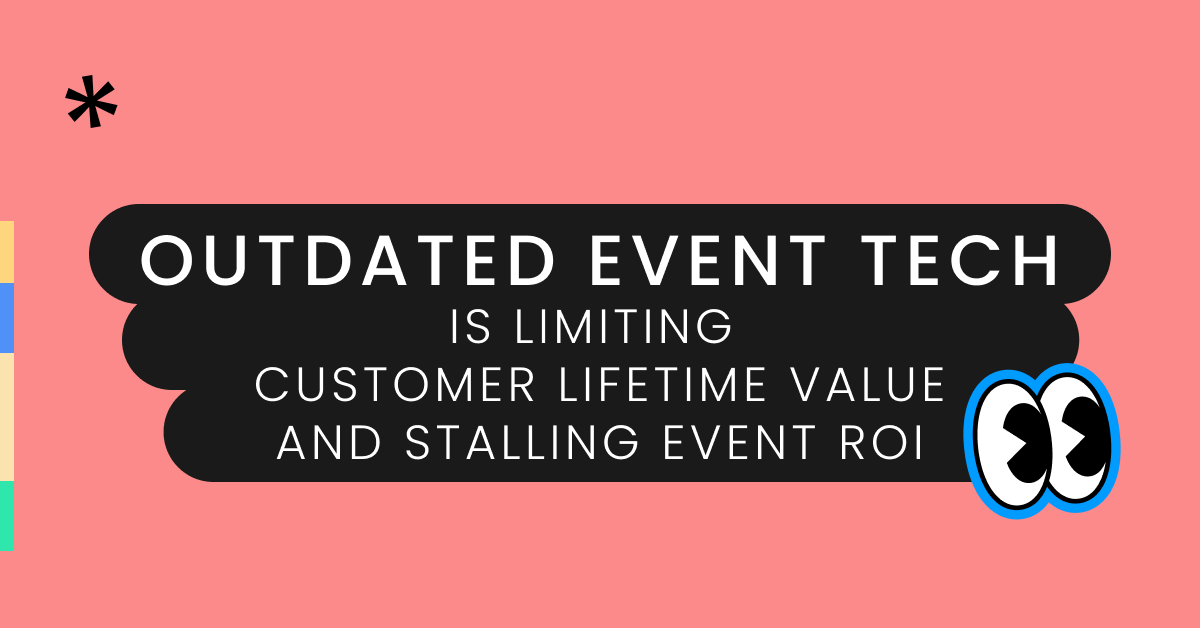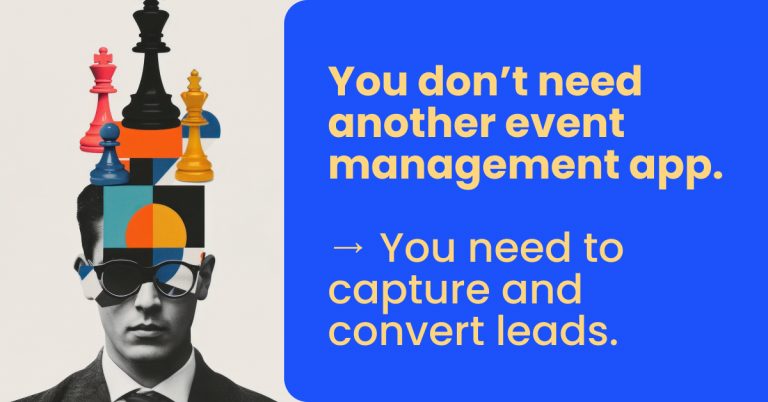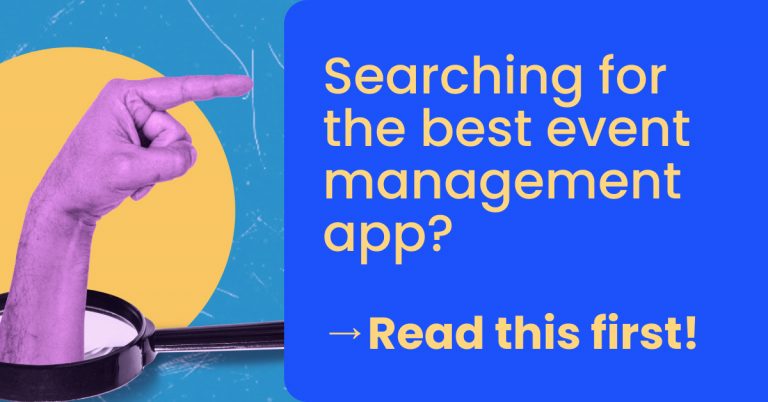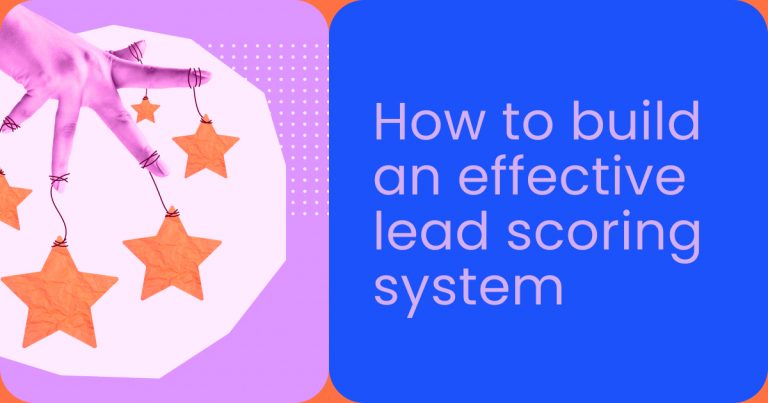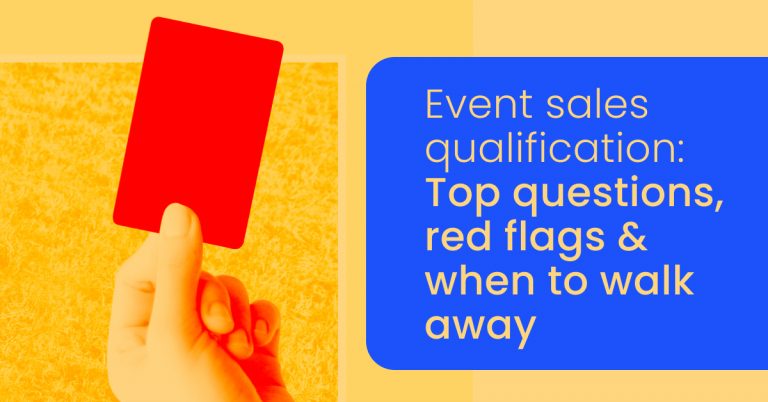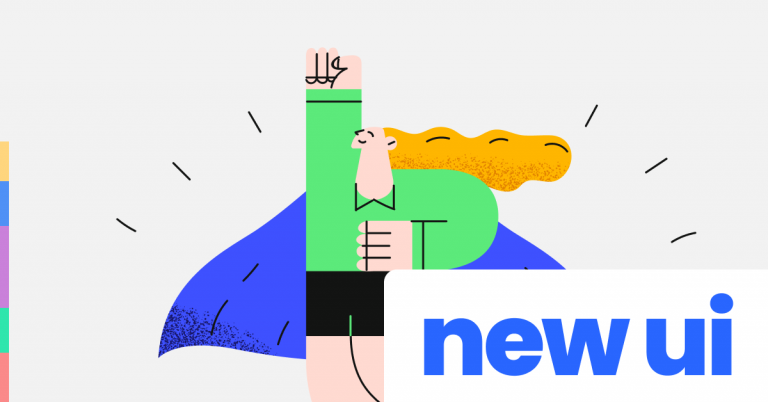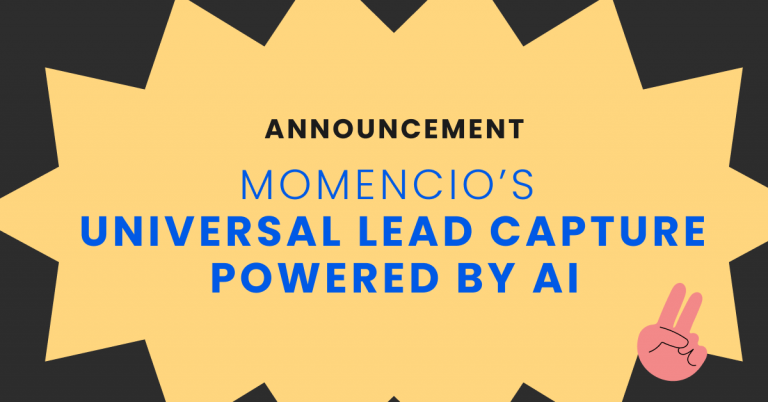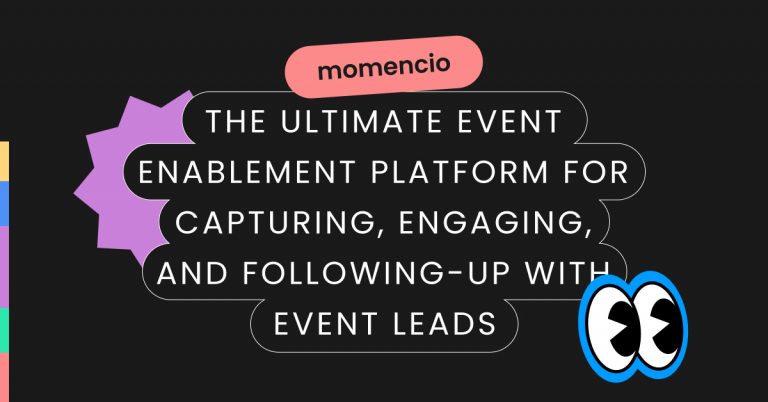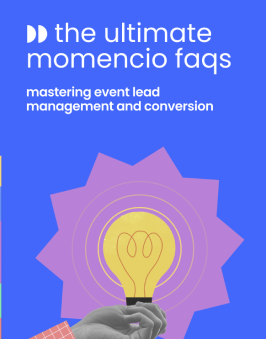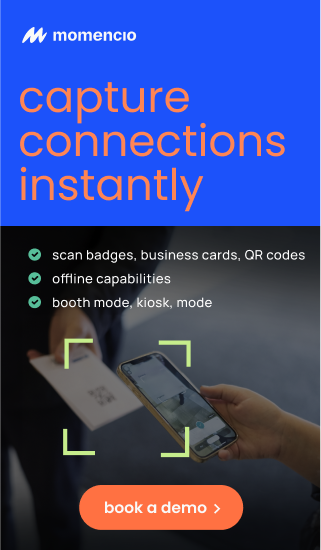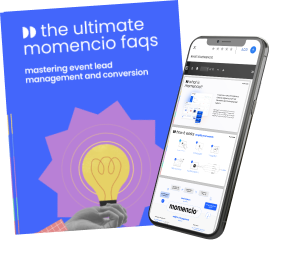For trade show exhibitors and event planners, outdated event tech is an unseen obstacle to maximizing customer lifetime value (CLV). Legacy technology often lacks the tools necessary to deliver efficient lead capture, personalized engagement, and rapid post-event follow-up—all of which are essential to securing long-term customer relationships and a strong event ROI.
Research shows that over 60% of marketers struggle to measure ROI on their event spend, largely due to data gaps and the inability to follow up in a timely manner with potential leads. This struggle to capture and convert leads at events isn’t due to a lack of strategy but rather the limitations of outdated tools, which often result in missed connections and diminished customer retention.
This article will explore how outdated event tech constrains CLV, analyzing the missed opportunities resulting from insufficient data access, ineffective engagement tools, and limited CRM integrations. With insights into modern solutions, exhibitors can boost customer lifetime value by turning each attendee interaction into a valuable, long-lasting relationship.
How outdated event tech limits event ROI
Outdated event technology can severely limit ROI by creating inefficiencies in lead capture, real-time engagement, and data-driven follow-ups. This section will outline each major impact, using mini-guides, examples, and practical tips to help exhibitors identify where legacy tech may be holding back their success.
Mini-guide: Lead capture – why speed and accuracy matter
Lead capture is essential to any event strategy, as it is the foundation for follow-up and conversion efforts. With outdated technology, however, lead capture becomes slow, inconsistent, and prone to errors, ultimately reducing the effectiveness of every interaction. Here’s a closer look at why lead capture quality matters and how outdated systems fall short.
- The problem: Legacy systems often rely on manual processes or inefficient digital tools, which require staff to spend valuable time recording information by hand or entering data into disparate systems. This time-consuming process increases the risk of data entry errors and means fewer leads are captured overall, directly cutting into potential revenue.
- Impact on ROI: Slow lead capture reduces the likelihood of timely follow-ups, which are critical to maximizing conversion rates. Studies suggest that leads followed up within the first 24 hours are twice as likely to convert. However, when event teams are limited by outdated tools, follow-up speed is compromised, leading to colder leads and missed sales opportunities. This not only impacts immediate revenue but also weakens long-term customer lifetime value, as exhibitors struggle to build meaningful connections in real time.
- Modern solution: Modern lead capture technology enables exhibitors to instantly gather attendee information through methods like badge scanning, mobile lead capture apps, and automated CRM integration. By streamlining lead data collection, exhibitors can improve accuracy, reduce follow-up time, and use the data in real time to personalize interactions on the event floor.
#Protip: Choose a lead capture solution that directly integrates with your CRM to eliminate data transfer delays. Integration allows sales teams to start nurturing leads as soon as the event ends, boosting conversion potential and increasing ROI. Automated solutions also support error-free data entry, helping teams focus on high-quality interactions with leads rather than managing information.
Missed engagement opportunities due to lack of real-time data
Engagement is essential to maximizing ROI, but legacy systems make it challenging to capture real-time data on attendee interests and behaviors. Without this live data, exhibitors miss chances to connect with attendees at pivotal moments, limiting their ability to adapt and personalize interactions. Below is an example of how real-time data transforms engagement potential.
- What outdated tech misses: Imagine an exhibitor relying on outdated event tech that can only provide end-of-day summaries instead of live insights. They lack the ability to track which sessions attendees are attending or which demos are drawing the most interest in real time. As a result, they can’t capitalize on in-the-moment engagement by directing more resources to popular attractions or adjusting their pitch to match attendee interests, missing key opportunities for connection.
- Impact on attendee experience: Without real-time engagement data, exhibitors must rely on generic pitches, making the attendee experience less relevant and memorable. When tech allows for real-time adjustments, exhibitors can approach attendees with insights tailored to their behavior—whether they visited a specific session, engaged with certain demos, or showed interest in a particular product feature. This personalization builds a stronger foundation for follow-up communication, leading to a higher conversion rate and boosting long-term ROI.
- Solution in action: Advanced event technology can gather attendee insights in real time, empowering exhibitors to tailor conversations based on each person’s interests. For instance, if an attendee participates in a product demo or signs up for a session, the system logs this interest immediately, giving sales reps the context to engage more meaningfully. By prioritizing these high-intent leads during the event, exhibitors maximize their chances of conversion, significantly enhancing ROI.
Quick tips for boosting ROI with modern tech
If upgrading to modern event tech feels overwhelming, consider these quick, effective ways to boost ROI without overhauling every tool at once:
- Automate follow-ups: Post-event engagement can make or break an attendee’s decision to convert. Automation tools let exhibitors send personalized thank-you messages, product links, and follow-up offers immediately after the event, capturing interest while it’s still fresh.
- Gamify engagement: Events that offer interactive, gamified experiences tend to retain attendees’ interest longer. With modern tools, exhibitors can create quizzes, raffles, or product challenges that are fun, memorable, and a great way to capture lead information. These tools build a positive, lasting impression, increasing the likelihood of conversion.
- Leverage mobile scanning: Using a mobile scanning tool for lead capture ensures that no potential client is overlooked. Mobile scanning not only saves time but also reduces error, letting exhibitors collect lead information in seconds. Integrate with your CRM for immediate follow-up capabilities to enhance ROI.
By recognizing where outdated tech creates bottlenecks and upgrading specific aspects of their tech stack, exhibitors can significantly improve both the attendee experience and event ROI, ensuring every interaction counts.
Why outdated event tech falls short
For event exhibitors, real-time analytics is the difference between an event that merely “happens” and one that actively drives value and revenue. Outdated event tech limits exhibitors to basic post-event reporting—data gathered too late to shape meaningful interactions. Real-time analytics, on the other hand, allows exhibitors to respond dynamically, turning live data into an immediate strategy for better connections, higher engagement, and maximized ROI. Below is a detailed look at how real-time analytics changes the game for exhibitors and why outdated tech misses the mark.
Precision targeting of high-value leads
When exhibitors can track attendee interactions in real time, they gain a unique advantage: knowing exactly who’s interested and how. Through tools like RFID badges, NFC scanning, and lead scoring systems, exhibitors can see who’s spending more time at key areas of their booth, engaging with product demos, or initiating conversations with booth representatives. This live data enables the sales team to prioritize attendees showing strong buying intent, tailoring their pitch to deepen interest.
Outdated systems generally lack lead scoring or engagement metrics, which means valuable prospects are often missed, followed up with too late, or approached with generic messages. With real-time analytics, however, exhibitors know exactly where to focus resources. By targeting high-potential leads based on their engagement during the event, teams increase the likelihood of conversion while cutting down on time spent with low-intent visitors.
Takeaway: Use an event app that offers advanced lead engagement scoring to monitor in real-time, allowing your team to quickly locate and connect with the most qualified prospects.
Optimizing traffic flow for better engagement
Event booths are high-traffic spaces, but that traffic doesn’t always flow optimally. With real-time insights, exhibitors can monitor foot traffic across the booth, seeing which areas attract the most attention and which are underutilized. Using heatmaps and movement tracking, exhibitors can detect high-interest areas and adjust the booth layout or product positioning in response.
For example, if one demo station is drawing high engagement, exhibitors might reallocate staff to that area, showcase additional products nearby, or shift visuals to align with visitor interest. Real-time data empowers exhibitors to adapt to attendee behavior as it happens, enhancing the booth’s impact and creating an experience that responds to audience preferences. Outdated systems typically don’t provide this visibility, so exhibitors miss the chance to shape booth engagement dynamically, losing potential leads who might otherwise engage with their offerings.
Takeaway: Use heatmaps and live tracking to identify “hot zones” at your booth, then redistribute staff and resources in real time to enhance coverage and interaction quality.
Tailoring follow-ups for higher conversions
Exhibitors can optimize post-event engagement by using real-time data to segment leads based on actual, in-booth interactions. Instead of the traditional, broad follow-up emails sent to all attendees, exhibitors can deliver personalized messages that directly address each attendee’s demonstrated interests. When an attendee spends significant time at a specific product display, that data enables a personalized follow-up with targeted content, additional product details, or special offers.
Legacy systems generally provide only basic lead lists after an event, which results in follow-ups that feel disconnected or irrelevant to attendees. In contrast, real-time data gives exhibitors a clearer picture of each attendee’s engagement level, letting them craft precise, personalized communications that have a higher chance of converting. Personalized follow-ups build stronger connections and create a natural progression from initial interest to conversion.
Takeaway: Ensure your event app integrates seamlessly with your CRM to ensure that your cross-functional teams have a unified view of the data, and the follow-ups align closely with attendee behavior and interests, creating more engaging post-event communication.
Adapting messaging in real time to meet attendee interest
Live data enables exhibitors to refine their messaging and demo focus based on attendee engagement levels and preferences. If analytics show a strong response to a specific product or feature, exhibitors can shift their focus to capitalize on that interest, creating a tailored experience for attendees. This agility makes a significant difference in a crowded event environment where attendees may have limited time and numerous options.
Without real-time insights, exhibitors often rely on static presentations or default pitches, which may or may not align with attendee interests. However, exhibitors with live analytics tools can customize their approach on the spot. For instance, if a new product line unexpectedly attracts attention, exhibitors can prioritize talking points that emphasize this product’s unique features, creating a more relevant and engaging attendee experience.
Takeaway: Use real-time insights from your event app to adjust presentations, demos, and product focuses during the event, ensuring your messaging aligns closely with attendee preferences and engagement trends.
Enhancing staff allocation to maximize touchpoints
Effective resource management is crucial for high ROI at events. Real-time data allows exhibitors to monitor booth activity levels and allocate staff based on traffic patterns and engagement needs. For instance, if analytics reveal that certain demo stations or product displays are consistently drawing larger crowds, exhibitors can position additional team members to support these high-demand areas. This maximizes attendee engagement, keeps interactions smooth, and reduces wait times, improving the overall attendee experience and the potential for conversion.
Without real-time data, exhibitors may miss opportunities to meet peak demand, resulting in lost engagement potential. By allocating staff dynamically based on live data, exhibitors ensure every attendee receives attention, enhancing lead capture rates and strengthening the booth’s impact.
Takeaway: Use live traffic and engagement data to place staff strategically throughout the booth, ensuring high-demand areas receive adequate support and every attendee touchpoint is optimized for engagement.
Competitive advantage through live data
Exhibitors equipped with real-time data gain a competitive edge. By making data-driven adjustments, they create an event experience that’s responsive, engaging, and strategically aligned with attendee behavior. This not only boosts immediate ROI but also leaves a lasting positive impression on attendees, positioning the brand as agile, attendee-focused, and prepared to deliver relevant solutions.
Outdated tech keeps exhibitors reactive, waiting until after the event to assess engagement levels and lead quality. Exhibitors with modern, analytics-driven tech capture value on the spot, outpacing competitors who lack these insights and setting themselves up for stronger post-event conversions and long-term customer relationships.
Takeaway: Embrace data-driven tools for an adaptable, insight-rich approach to events that consistently outperforms competitors relying on outdated technology.
Optimizing booth presence to capture every opportunity
In the world of trade shows, every inch of booth space and every minute with an attendee counts. Exhibitors with outdated tech often rely on static setups and general crowd flow assumptions, missing out on critical opportunities to engage visitors and maximize their presence. Adaptive resource allocation, powered by real-time data, changes this completely. Here’s how real-time tech optimizes every aspect of booth performance, enabling exhibitors to boost interactions, refine resource placement, and secure a stronger ROI.
Understanding foot traffic patterns in real-time
One of the standout benefits of modern event tech is the ability to visualize and track booth traffic in real-time. Unlike static planning, where booth design and staff allocation remain fixed, real-time analytics give exhibitors the power to respond to how attendees naturally move, congregate, and interact at different times throughout the day. Advanced solutions like heatmaps and attendee tracking tech, such as RFID badges and NFC, allow teams to see the flow of foot traffic and understand exactly where people are drawn. For instance, data might reveal high engagement at one demo station in the morning and a different area in the afternoon. With these insights, exhibitors can adjust their setups on the fly, ensuring each part of the booth is optimized for engagement when interest is highest.
This is a sharp departure from outdated tech, which provides only generalized data about booth visits after the event. Real-time analytics empower exhibitors to adapt, increasing the likelihood of meaningful connections and minimizing downtime across the booth space.
Strategically repositioning staff to maximize engagement
Staff placement is crucial to booth success, yet many exhibitors don’t have the insights to adjust staffing levels based on actual demand. Real-time analytics solve this problem. By monitoring which parts of the booth are most active, exhibitors can strategically position their team members to make the most of peak periods, ensuring that high-interest attendees receive immediate attention without waiting or leaving the area prematurely.
For example, if a product demo suddenly attracts a crowd, the exhibitor can pull in additional representatives to support attendee inquiries, preventing bottlenecks and keeping the experience seamless. When fewer visitors are present, some staff can be rotated to rest, preventing burnout and maintaining energy levels for high-traffic periods. This flexibility not only makes a stronger impression on attendees but also improves staff productivity and engagement quality.
This approach isn’t possible with legacy tech. Without live tracking and adaptive data, exhibitors are left to make staffing decisions based on guesses, which often results in overstaffing during quiet times and being spread thin during peak periods. With modern analytics, every member of the team is exactly where they need to be, contributing directly to booth ROI.
Highlighting high-engagement areas for maximum visibility
Not all booth areas are created equal. Real-time analytics give exhibitors a clear understanding of which displays or demos are attracting the most attention, enabling them to highlight these popular spots. For instance, if attendees are particularly interested in a specific product demo, exhibitors can increase its visibility by adjusting signage, adding interactive elements, or incorporating targeted messaging that draws even more traffic. Conversely, if some parts of the booth aren’t generating interest, they can be adjusted, refreshed, or even restructured to maintain an appealing, engaging atmosphere.
This level of adaptability is only achievable with real-time tech. Traditional setups rely on pre-event planning without the flexibility to shift focus based on actual attendee interest. Exhibitors with real-time insights have the advantage of actively shaping the attendee experience, improving the visibility of high-engagement areas, and enhancing the overall booth dynamic in ways that capture—and sustain—attendee attention.
Adjusting booth layout to maintain attendee flow
A booth’s layout is critical to engagement, but even the most well-designed space may not perform as expected once the event is underway. Real-time tracking tools, like heatmaps and flow analyses, allow exhibitors to understand how attendees move through their space. These insights are invaluable for making on-the-spot adjustments, such as shifting display positions, opening up additional entry points, or adding guidance cues to facilitate movement and reduce congestion.
For instance, if data shows that attendees are clustering near the booth entrance, creating a bottleneck, exhibitors can reposition high-interest items deeper within the space to draw attendees in and keep them circulating. Similarly, if certain pathways aren’t being used, they can be restructured to guide attendees more intuitively through the booth, improving both visibility and flow. This continuous optimization ensures that the booth maintains a steady flow of engagement and maximizes exposure for every area, keeping attendee interest high and interaction quality optimal.
Creating dynamic engagement zones based on attendee behavior
Different attendee types are drawn to different types of interactions. Some prefer product demos, while others are more interested in one-on-one consultations or networking opportunities. Real-time data enables exhibitors to create dynamic engagement zones tailored to these preferences, enhancing the relevance and appeal of the booth experience for each type of visitor.
For example, if real-time data shows that networking zones are consistently busy while product demo areas see intermittent traffic, exhibitors can adjust their messaging and staff allocation to better support each zone’s unique demands. Alternatively, if attendees appear particularly engaged with interactive features—like a live product demo or virtual reality experience—those areas can be highlighted and expanded to maintain momentum.
Outdated event tech doesn’t support this level of customization, often leaving exhibitors with a static, one-size-fits-all approach. Real-time analytics empower exhibitors to transform their booths into flexible, attendee-focused spaces where engagement isn’t just encouraged—it’s engineered. The result? A more memorable experience that drives long-term brand value and secures higher ROI.
Boosting attendee retention with data-driven adjustments
Finally, real-time analytics provide exhibitors with the insights needed to retain attendee interest throughout the event. By monitoring engagement levels, dwell times, and interaction types, exhibitors can identify when interest dips and proactively address these moments to recapture attention. For instance, if data shows that certain high-engagement areas see traffic decline later in the day, exhibitors can introduce fresh elements—like short presentations, new product highlights, or limited-time offers—to renew interest and extend visit duration.
This proactive approach isn’t feasible with outdated tech, where adjustments can only be made after observing attendee behavior patterns at a delay. With real-time insights, exhibitors don’t just respond to attendee behavior—they shape it, creating a dynamic booth experience that adapts to and anticipates attendee needs. This adaptability makes the booth more engaging, keeps visitors interacting longer, and directly enhances lead capture, making the event more profitable.
The competitive edge of adaptive resource allocation
Real-time analytics aren’t merely a convenience; they’re a competitive advantage. Exhibitors who adopt adaptive resource allocation gain the power to drive attendance, improve engagement quality, and increase conversions—all in real-time. Outdated tech leaves exhibitors with missed opportunities and limited ROI, while real-time solutions deliver the agility to respond and adapt to attendee behavior with precision.
Creating connections that convert
Crafting a memorable, relevant experience at events goes beyond eye-catching displays; it’s about personalizing every interaction to make each attendee feel valued. Real-time data makes this possible, giving exhibitors insights to tailor conversations, respond to individual preferences, and increase the chances of long-term brand loyalty. Here’s a breakdown of how exhibitors can use modern event tech to engage attendees effectively and increase conversions.
Pinpointing attendee interests in real time
Knowing what interests each attendee most is the first step toward meaningful engagement. Advanced event tools like RFID tags, NFC systems, and event apps allow exhibitors to see exactly where attendees spend their time, which demos they engage with, and the products that capture their attention. This real-time data means exhibitors can greet attendees with insights and offers tailored specifically to their interests.
- How to capture interest levels: Collect data on time spent at each booth area, track which demos attract attendees, and note the products or services they interact with the most
- Practical engagement: Use this live data to adjust conversations, offering details on products that align with the attendee’s visible interests. For example, if someone shows prolonged interest in a product demo, your team can dive deeper into specific benefits and use cases that match that product
Quick tip: An attendee spending over five minutes on a specific demo? Offer them additional content, a follow-up meeting, or an exclusive product discount relevant to that demo’s theme. Small gestures based on real-time data create a lasting impression
Segmenting attendees for targeted follow-ups
One-size-fits-all messaging is outdated; today’s attendees expect a personalized approach that acknowledges their unique needs and priorities. By segmenting attendees based on real-time engagement metrics, exhibitors can deliver more relevant follow-ups, leading to better responses and higher conversion rates. For instance, attendees looking for product information may appreciate detailed brochures or in-depth follow-up calls, while those focused on networking might value invitations to special meet-and-greet sessions or post-event industry webinars.
- Product-focused attendees: Identify those who repeatedly visit product demos or ask product-specific questions. After the event, these attendees will respond better to in-depth product guides, user case studies, or exclusive demo offers
- Networking-driven attendees: When an attendee spends more time at the networking lounge or speaks with various booth representatives, they likely prioritize connections. Follow up with an invitation to industry events or offer introductions to relevant contacts within your company or network
- Knowledge seekers: If someone spends time in sessions or educational seminars, prioritize content-rich follow-ups. Sharing whitepapers, case studies, or a summary of key takeaways from the session shows you understand and value their learning goals
Using live data to offer personalized recommendations
Attendees are more likely to engage when exhibitors offer recommendations that feel timely and relevant. With live data, exhibitors don’t need to wait until after the event to personalize—they can do it right at the booth. By tracking each attendee’s engagement in real time, sales representatives can suggest content, products, or interactions tailored to their visible interests, creating a memorable and highly personalized experience.
Examples of personalized recommendations
- Based on demo interactions: Attendees who engage with a demo on sustainable materials might appreciate a follow-up conversation on eco-friendly product lines or exclusive information on upcoming sustainable releases
- Based on session attendance: If an attendee attended a session on tech innovation, exhibitors can share related product insights or recommend additional sessions or resources on emerging tech applications. Tailoring recommendations based on observed behavior shows attentiveness and boosts brand perception
Quick tip: Encourage your team to use real-time data from attendee profiles to offer related materials, additional session invites, or exclusive deals that connect with each person’s unique interests
Adjusting booth elements to match engagement patterns
Engagement isn’t static—it fluctuates based on booth setup, product visibility, and attendee interest levels. Real-time data lets exhibitors track these patterns and adjust their booth layout, product displays, and staffing accordingly. For example, if a specific area consistently draws higher interest, exhibitors can add interactive features, rotate in additional staff, or spotlight popular products.
Real-time booth adjustments:
- Reinforce High-Engagement Areas: If data shows that a particular demo station is drawing a crowd, exhibitors can add support staff to answer questions, provide live demos, or offer additional content to keep attendees engaged longer
- Redistribute Staff: Use real-time tracking to position team members where they’re needed most. If certain areas have high attendee traffic, exhibitors can add team members to keep engagement strong, while less active areas can be restaffed as demand shifts
- Create Dynamic Flow: Real-time data highlights areas where attendees linger versus spaces that need more traffic. Adjusting layouts based on this feedback ensures that each attendee has a seamless, engaging experience without bottlenecks or overlooked displays
Designing follow-ups that resonate
Follow-ups are one of the most important phases of any event strategy. Yet, generic follow-ups often feel impersonal and miss the mark. With real-time data captured during the event, exhibitors can design follow-ups that address each attendee’s specific interests, making every interaction feel intentional and relevant. This approach improves response rates, drives conversions, and builds stronger relationships post-event.
Tips for personalized follow-ups
- Reference specific interactions: Remind attendees of a product demo they viewed or a topic they discussed. This personal touch shows that you remember their interests and makes the follow-up feel genuinely thoughtful
- Offer tailored content: Share in-depth guides, articles, or videos based on topics the attendee engaged with during the event. This positions your brand as attentive and focused on value, helping to extend the conversation
- Create exclusive offers: For attendees with high engagement levels, offer a personalized discount, exclusive product trial, or early access to new releases. Exclusive offers emphasize value and appreciation, increasing the likelihood of conversion
Brand impact and lasting impression
Personalized engagement not only boosts immediate ROI but also strengthens long-term brand perception. When attendees feel seen, heard, and valued, they’re more likely to have a positive impression of the brand. Exhibitors who can adaptively personalize their approach leave a stronger impact, positioning their brand as professional, responsive, and genuinely customer-focused. This approach increases the chances that attendees will remember the experience and reach out post-event, turning initial interest into customer loyalty.
Through real-time data and adaptive engagement strategies, exhibitors create a dynamic, attendee-focused experience that goes beyond superficial connections, making each interaction count for both attendee satisfaction and event ROI.
Boosting event ROI through real-time analytics for attendee tracking
Trade shows and events move quickly, and every moment matters. Exhibitors who rely on real-time analytics for tracking attendee behavior don’t just gather data—they create a responsive event environment that adapts to attendee interests, maximizes engagement, and drives higher ROI. Here’s how real-time attendee tracking transforms event results.
Real-time insights that refine engagement in the moment
Traditional event tech provides data at the end of the day, often too late to act on attendee behaviors. With real-time analytics, exhibitors don’t have to wait; they get live insights that let them adjust immediately. By tracking where attendees spend their time, what booths they return to, or which demos they interact with most, exhibitors have all the information needed to adjust staffing, display positioning, or demo timings for peak impact.
How to leverage live data:
- Monitor booth traffic: Use heatmaps or real-time location tracking to see which booth areas draw the most visitors and ensure staff is present to engage with attendees in high-traffic zones
- Prioritize high-interest displays: If specific products or demos attract repeated visits, move them to a central spot or expand the display to cater to demand
- Adjust content focus: Real-time data reveals attendee preferences as they engage, allowing exhibitors to adjust in real-time by focusing messaging or offering tailored information based on observed interests
Prioritizing high-potential leads
For exhibitors, distinguishing between casual attendees and high-intent prospects is key to maximizing conversions. Real-time analytics allow exhibitors to spot these distinctions. Metrics such as time spent at a display, multiple interactions with the same product, or repeated visits to the booth highlight leads with genuine interest. This segmentation helps sales teams prioritize follow-ups with attendees who have shown clear buying signals, making engagements more meaningful and efficient.
Effective tactics for lead prioritization:
- Score based on behavior: Assign scores based on engagement metrics like time spent or interactions at product displays to identify high-intent attendees
- Create follow-up tiers: Develop different follow-up strategies for top-tier leads, such as offering exclusive product trials, personalized demonstrations, or limited-time offers to reinforce interest and push toward conversion
- Staff responsively: Direct your most experienced team members to high-potential leads, ensuring those interactions are handled with expertise and attention, driving stronger engagement and closing rates
Measuring dwell time for a refined strategy
Knowing how long attendees spend in different areas of the booth provides insight into which products, demos, or interactions are making an impact. Higher dwell times signal interest and engagement, while shorter times may suggest low relevance or need for adjustment. By analyzing dwell times across booth zones, exhibitors can improve resource allocation, fine-tune product displays, or introduce more engaging elements to retain attendee interest longer.
Using dwell time to optimize booth strategy
- Highlight popular displays: If a particular product consistently draws attendees, increase its visibility by relocating it to a more central area or pairing it with interactive demos
- Introduce attention retainers: For displays with shorter dwell times, consider adding elements that encourage interaction, such as hands-on demos, live Q&As, or touchscreens for product exploration
- Refine messaging: Use dwell time data to assess which messaging resonates most, adjusting presentations, signage, or conversation points to better align with what holds attendee interest
Enhancing post-event engagement with data-driven follow-ups
Data collected in real time is highly actionable, allowing for personalized, effective post-event follow-ups. Exhibitors can reference specific products or sessions an attendee showed interest in, making follow-up emails or calls feel intentional and relevant. This targeted approach enhances engagement, increases open and response rates, and leads to higher conversions.
Best practices for data-driven follow-ups
- Reference event interactions: Mention specific demos, products, or sessions that attendees engaged with, showing you value their interest and remember the details
- Offer next-step resources: Tailor follow-ups to the attendee’s interest level by offering webinars, product trials, or consultations on topics they engaged with most
- Track follow-up results: Use engagement metrics like email open rates, click-through rates, and response times to assess the effectiveness of each follow-up, refining your approach for future events
Crafting strategic spaces for higher event ROI
Creating impactful spaces within the booth is essential for maximizing event ROI. Gone are the days when a booth was a static setup with a few brochures and a standard demo. Today’s exhibitors are leveraging “engagement zones” to create dynamic spaces that adapt to attendee interests and drive conversions. Here’s how modern engagement zones elevate the attendee experience and contribute to stronger results for exhibitors.
Defining engagement zones for strategic impact
An engagement zone is more than just a designated area within the booth—it’s a space carefully designed for a specific type of interaction. Each zone serves a unique purpose, whether for product demos, networking, or educational presentations. By separating the booth into distinct zones, exhibitors give attendees clear choices that meet different needs, creating a more tailored, efficient experience.
Types of engagement zones:
- Product demo zone: A dedicated area for in-depth product demonstrations, equipped with interactive displays, hands-on product trials, or live Q&A sessions with product experts
- Networking lounge: A more relaxed, welcoming space for casual conversation, often featuring comfortable seating and refreshments, encouraging attendees to spend more time and engage with brand representatives
- Education and presentation area: A mini-seminar space within the booth where exhibitors can host presentations, workshops, or case study showcases to provide value-driven content to attendees interested in learning
Quick tips for optimizing engagement zones
Place high-impact zones front and center: For exhibitors, placing the most engaging content at the front of the booth, where it’s easily visible, can increase foot traffic and interest. Product demos or visually engaging elements in high-traffic areas attract passersby and encourage them to stop by.
Use clear signage: Make sure each engagement zone is easy to find with signage that indicates what each area offers. Visitors should be able to identify the purpose of each space with a quick glance, reducing confusion and enhancing flow.
Provide multiple engagement levels: Offering different engagement levels—such as self-guided demos, one-on-one consultations, or group presentations—helps cater to a variety of attendee preferences within each engagement zone.
Optimizing booth layout for engagement and ROI
A well-organized booth layout doesn’t just attract visitors; it directs them intuitively, maximizing each interaction and boosting ROI. When attendees can navigate a booth without friction, they’re more likely to explore, engage, and connect. Here’s how exhibitors can design an attendee-centered flow that elevates both the experience and conversion potential.
Strategic entry points to attract attention
Making a powerful first impression starts with the entry point. Positioning visually compelling displays and interactive elements at the entrance captures attention and invites attendees in. This initial zone sets the tone for the booth experience and encourages exploration.
- Highlight key products: Place flagship products or trending solutions in prominent positions to draw attendees in right from the start
- Utilize interactive screens: A screen showing dynamic content, product videos, or demos near the entrance captures interest and offers a natural starting point
Quick tip: Position staff at the entry point to welcome attendees and guide them to different zones, making the experience feel personalized from the outset
Flow pathways that encourage exploration
Well-defined pathways are crucial for guiding attendees through the booth. Avoid creating bottlenecks by establishing clear routes that allow visitors to flow smoothly between engagement zones.
- Create multiple pathways: Offer different routes within the booth to accommodate various engagement preferences, allowing attendees to choose their journey
- Avoid congestion: Keep high-traffic zones—like product demos and presentations—away from entry points to maintain open flow
- Guide attention with signage: Use subtle signage and visual cues to guide attendees from one engagement zone to the next, keeping them moving through the booth naturally
Engagement islands for focused interaction
Dedicated interaction “islands” within the booth are ideal for deep, focused engagement. Setting up these standalone spaces for specific demos or consultations allows attendees to engage with products and services at their own pace.
- Demo stations: Place product-specific demo stations where attendees can try features or ask product-specific questions
- Consultation areas: Set aside quieter zones where attendees can discuss solutions in detail with representatives, free from distractions
- Real-world application: Ensure that each island is staffed with product experts who can answer in-depth questions, making every attendee interaction count
Driving customer lifetime value through advanced event tech
For exhibitors, increasing customer lifetime value (CLV) hinges on more than just capturing leads—it’s about nurturing relationships and delivering ongoing value. Modern event technology provides the tools needed to maximize each attendee’s experience and potential long-term value, while outdated tech often fails to support this level of engagement. Here’s how four critical tech-driven strategies—real-time lead scoring, data-driven follow-ups, post-event insights, and AI-powered automation—transform event ROI and CLV.
Real-time lead scoring: prioritizing high-intent attendees on the spot
One of the most effective ways to boost CLV at events is by identifying and engaging high-potential leads while they’re still on the show floor. Real-time lead scoring tools, such as those embedded in RFID systems or event apps, analyze attendee behavior in real time. For example, exhibitors can instantly see if an attendee spends significant time at a product demo or repeatedly returns to specific areas of the booth. These signals indicate high buying intent, enabling exhibitors to prioritize these attendees for in-depth engagement and tailored content.
Exhibitors with outdated tech often miss these cues, relying on guesswork or post-event analysis to identify key leads, which can result in missed opportunities and weakened relationships. By contrast, real-time lead scoring equips sales teams with actionable data, enabling them to deliver more relevant information and customized experiences that keep high-intent attendees engaged. This targeted engagement strengthens initial interactions and lays the groundwork for long-term loyalty, increasing CLV from the very first touchpoint.
Enhanced post-event follow-up with personalized data
Effective follow-ups are essential to maintaining engagement after the event. Modern tech integrates CRM systems directly with lead capture tools, allowing exhibitors to tailor follow-up communications based on the specific interests and behaviors of each attendee. For instance, if an attendee showed interest in a specific product, the follow-up can include a product guide, case studies, or exclusive offers related to that item. By contrast, outdated tech often lacks this integration, resulting in generic or delayed follow-ups that fail to capitalize on attendee interest.
Exhibitors using personalized, data-driven follow-ups can create a deeper connection with attendees, as each message is directly relevant to their experience at the event. This relevancy not only improves conversion rates but also enhances the attendee’s perception of the brand, making them more likely to engage long-term. When follow-ups feel intentional and customized, they contribute significantly to CLV, as attendees feel understood and valued.
Data-driven insights to refine future strategy
One of the most powerful benefits of modern event tech is the depth of data it provides on attendee behavior, engagement levels, and feedback. These insights go beyond individual interactions, offering a comprehensive view of what worked and what didn’t at the event. Using analytics tools, exhibitors can assess attendee flow, booth engagement, content effectiveness, and even areas for improvement. This data is invaluable for refining future event strategies, improving the attendee experience, and increasing the likelihood that attendees will return.
Outdated event tech, which typically lacks robust analytics capabilities, often leaves exhibitors without actionable insights, making it challenging to measure impact accurately or plan improvements. With advanced analytics, exhibitors can iterate and enhance their approach with each event, creating a continuously improving cycle that resonates with attendees. This approach directly contributes to higher CLV, as returning attendees and refined engagement tactics create stronger brand loyalty over time.
AI and automation for consistent engagement beyond the event
Automation, powered by AI, enables exhibitors to maintain contact with attendees long after the event has ended. Through automated email sequences, exhibitors can continue to share valuable content, updates, and offers based on each attendee’s profile and engagement history. AI tools analyze attendee data to determine which content or offers are most likely to engage each contact, personalizing interactions at scale.
For instance, an attendee interested in a particular product line might receive automated updates about related new releases or exclusive webinars. This level of customization and consistency would be impossible to achieve manually, especially at scale. Outdated tech, lacking automation capabilities, typically limits exhibitors to a one-time follow-up, which can quickly lead to attendee disengagement. By contrast, AI and automation help maintain ongoing contact that strengthens relationships, builds trust, and fosters long-term loyalty—all key factors in maximizing CLV.
Conclusion
Outdated event tech limits exhibitors in ways that directly impact customer lifetime value (CLV). Without real-time analytics, personalized follow-up capabilities, and automation, exhibitors miss critical opportunities to engage, nurture, and convert attendees into long-term customers. In contrast, modern event technology enables exhibitors to prioritize high-intent leads, tailor interactions, and sustain connections beyond the event. By adopting advanced tools, exhibitors create an attendee-centered experience that not only enhances immediate ROI but builds brand loyalty and increases CLV over time.
In an increasingly competitive environment, transitioning to modern event tech isn’t just about upgrading tools—it’s about reshaping the attendee journey and delivering ongoing value that strengthens brand relationships. For exhibitors committed to maximizing CLV, investing in advanced event solutions is the clear path to both immediate impact and sustainable growth.
FAQs
- How does real-time data improve customer lifetime value for event exhibitors?
- Real-time data allows exhibitors to immediately identify high-intent attendees and adapt their engagement strategy to match each person’s interests. By capturing attendee behaviors as they happen, exhibitors can prioritize leads, deliver relevant content, and personalize follow-ups, all of which create more meaningful connections and increase the likelihood of conversion. These personalized interactions foster stronger, longer-lasting relationships, directly contributing to customer lifetime value.
- Can smaller event teams benefit from advanced tech, or is it mainly for large-scale operations?
- Absolutely, advanced event tech is beneficial for both small and large event teams. Tools like automation, real-time analytics, and lead scoring streamline processes, making it easier for smaller teams to manage high levels of engagement without being overwhelmed. For smaller teams, modern tech can serve as a “force multiplier,” enabling them to operate with efficiency and precision, maximizing ROI and CLV even with limited resources.
- How does automation in follow-up communication impact attendee engagement after the event?
- Automation in follow-up communication maintains attendee interest long after the event concludes. Automated workflows can send personalized emails, relevant content, and exclusive offers based on each attendee’s behavior and engagement level. By staying connected consistently, automation keeps the brand top-of-mind and supports ongoing engagement, nurturing relationships that can increase the likelihood of future conversions and boost CLV.
- What are engagement zones, and how do they enhance the attendee experience?
- Engagement zones are strategically designed areas within a booth focused on different types of interactions, such as product demos, networking, or educational presentations. They provide attendees with clear options and personalized experiences that align with their interests. Engagement zones help exhibitors tailor the attendee journey within the booth, creating a more engaging and memorable experience that strengthens attendee connection to the brand.
- What specific insights can exhibitors gain from post-event analytics, and how do they improve future events?
- Post-event analytics offer insights into attendee behaviors, popular booth areas, session attendance, and engagement trends. This data helps exhibitors understand which strategies were effective and which areas need improvement. By analyzing post-event data, exhibitors can refine future event strategies, ensuring each event builds on previous successes. This iterative improvement process makes each event more impactful, helping exhibitors deliver an optimized experience that contributes to higher CLV and brand loyalty.
